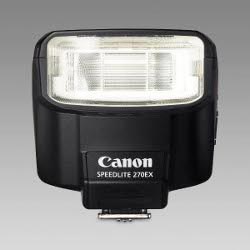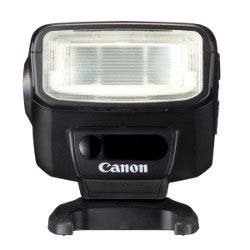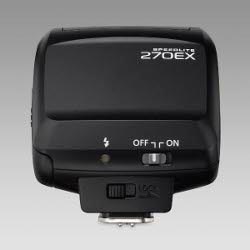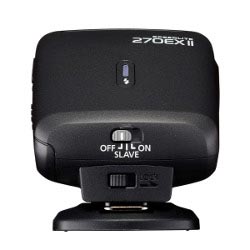Canon's ultra-compact and ultra-lightweight Canon Speedlite 270EX flash is replaced by Canon Speedlite 270EX II. Since the new flash carries the Mark II designation, it is not very different from the original version — the main characteristics of both units are the same. For some premium, Canon Speedlite 270EX II offers a few additional features, while Canon Speedlite 270EX can still attract customers with its lower price point.
One of the main advantages of Canon Speedlite 270EX II over its predecessor is the slave function. Like the bigger Canon flashes, 270EX II can be triggered by a master unit, whether it is another flash gun, wireless transmitter (like Canon ST-E2), or a pop-up flash of the newer camera bodies.
Unlike the higher end Canon flashes, however, Canon Speedlite 270EX II is not capable of selecting a wireless group or channel. It is fixed in Group A and triggered by all Canon channels. This limitation is reasonable for a flash of this class. It simplifies the overall usage of the unit. The downside is that if there are two or more photographers in a room shooting with Canon wireless system, Canon Speedlite 270EX II will fire when any of the photographers takes a picture. This, however, should not be a typical scenario for this flash.
Please note that the reception angle of the wireless receiver of Canon Speedlite 270EX II is ±45 degrees horizontally and ±25 degrees vertically, which is close what other Canon flash units have. So, you are limited in the ways you can position the flash (especially outdoors). Indoors, however, you can get more flexibility for positioning Canon Speedlite 270EX II, since the signals from the master unit reflect off of the walls and ceiling.
It is also worth mentioning that with the new slave functionality, Canon Speedlite 270EX II has also gained two new custom functions:
The second significant step forward for 270EX model is the introduction of the remote shutter release button. It allows you to trigger your camera remotely (up to 16ft/5m away) using your flash unit. This is very handy when you set up you camera on a tripod and want to experiment with the light position (instead of framing and composing the shot). Pressing the release button on the flash gives you two seconds before the camera takes a picture (the camera must be set to self-timer/remote control), which should be enough, in most cases, to position your flash where you want it. Please note that remote release feature works the same way RC-6 infrared controller does, and it is compatible with many modern cameras including EOS 5D Mark II, EOS 7D, EOS 60D and EOS 600D.
As mentioned above, Canon Speedlite 270EX and Canon Speedlite 270EX II share the same set of main features and functions. Here is to mention some of them:
 |
 |
 |
 |
Canon Speedlite 270EX II is a worthy replacement for Canon Speedlite 270EX. With its slave capabilities and the brand new remote shutter release button, 270EX Mark II has more to offer to the photographers. 270EX Mark I, while still available, can be a better choice for people who are just looking for a ultra-portable on-camera flash with bouncing capabilities.